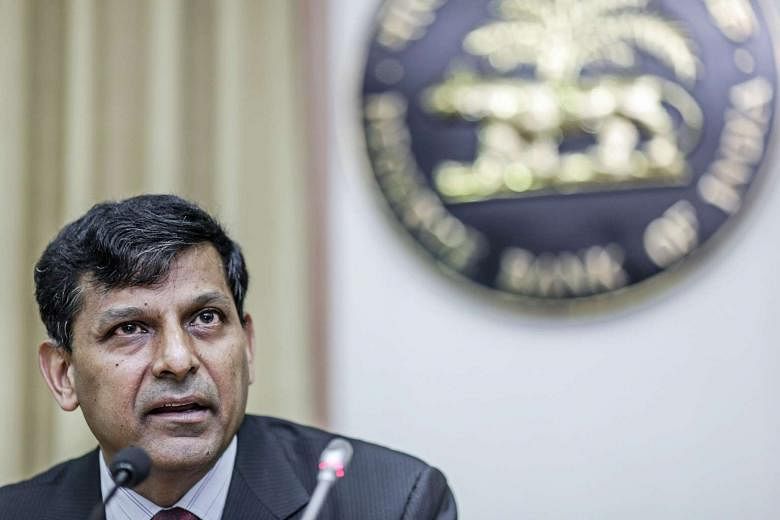MUMBAI (BLOOMBERG) - Indian central bank Governor Raghuram Rajan kept interest rates unchanged, rebuffing pressure from the Finance Ministry to reduce borrowing costs that are among the highest in Asia.
Rajan left the benchmark repurchase rate at 7.25 per cent after three cuts this year, including in June, the Reserve Bank of India said in a statement in Mumbai on Tuesday. The move was predicted by 39 of 42 economists in a Bloomberg News survey. Three expected a cut to 7 per cent.
"Given that policy action was front-loaded in June, it is prudent to keep the policy rate unchanged at the current juncture while maintaining the accommodative stance of monetary policy," Rajan said in a statement. The central bank will monitor for room to easy policy as it awaits greater transmission of previous cuts, he said.
Rajan wants to ensure his inflation target of 6 per cent by January isn't at risk from surging food prices, a poor monsoon and a possible increase in US interest rates next month. A Finance Ministry official on Monday said inflation can't be the primary concern of policy makers, the latest sign of growing tensions with the central bank.
India's pause contrasts with easing from China and Russia even as Asia's third-biggest economy shows mixed signs of strength. Rajan said the "outlook for growth is improving gradually," while noting that new investment in India remains subdued and a weaker global expansion may hurt exports.
Risks to his 6 per cent inflation target in January are "broadly balanced," Rajan said, with softer crude prices and a near-normal monsoon offsetting inflation conditions in June that "surprised somewhat on the upside." Inflation projections for January to March 2016 are lower by about 0.2 per cent, he said.
"Significant uncertainty will be resolved in the coming months, including the likely persistence of recent inflationary pressures, the full monsoon outturn, as well as possible Federal Reserve actions," Rajan said.
While Prime Minister Narendra Modi's government agreed this year to an inflation target of 2-6 per cent, a draft bill unveiled last month threatens to water down the proposal. It would give the government majority control of a monetary policy committee and review the inflation target every three years, putting it at odds with recommendations from the central bank.
Modi's administration has taken steps in recent weeks to contain food costs by limiting gains in guaranteed prices for rice and lentils. Food accounts for almost half of the consumer-price index basket.
Rajan needs to decide how much more support he's able to provide to an economy where exports have fallen for seven straight months, factory output's slowing and credit growth has failed to accelerate. The mixed signals cloud the outlook in an economy the government says grew 7.5 per cent in January-March under a new calculation method.
"Though 7.5 per cent GDP growth appears high, it is below India's potential" of around 10 per cent, Faraz Syed, an economist at Moody's Analytics in Sydney, wrote in a July 29 report. "The biggest hurdle is private investment."

